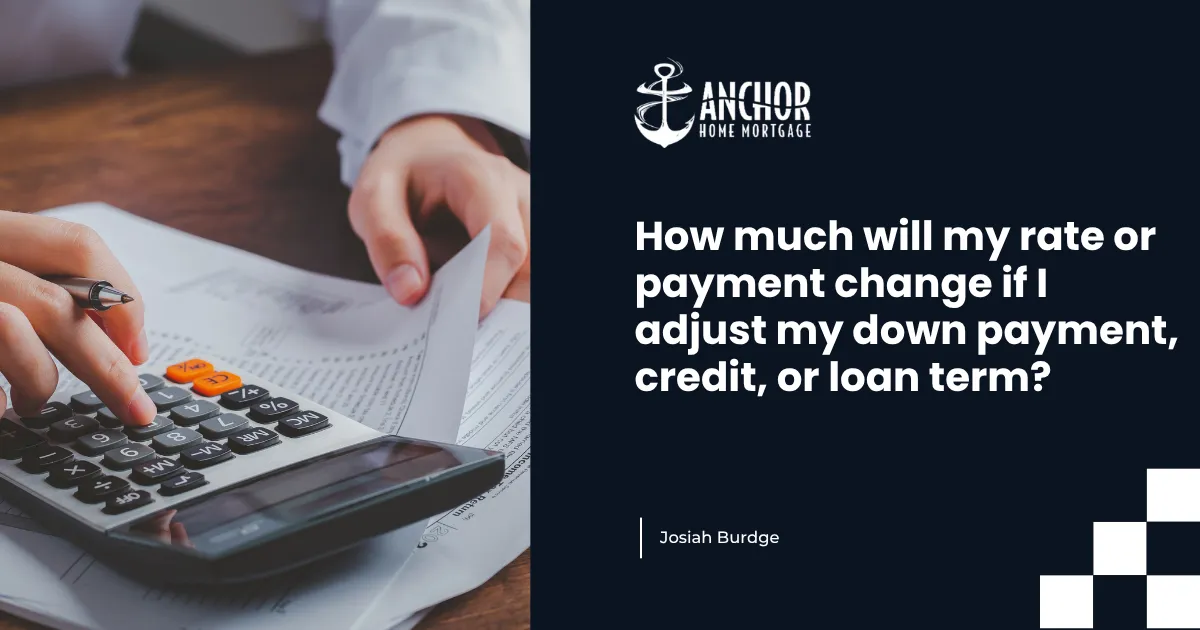
how-adjusting-down-payment-credit-score-loan-term-impacts-your-mortgage-rate-payment
When borrowers ask how they can improve their mortgage deal, the truth is: the levers are real — and even modest adjustments can make a meaningful difference. In today’s high-rate environment, moving the needle by improving your credit score, increasing your down payment, or shortening your loan term (for example, from 30 to 15 years) can lead to better interest rates or lower monthly payments. While there’s no standard number for “how much” without running your scenario, many lenders offer side-by-side comparisons so you can see the impact of each choice.
The Key Levers You Can Pull
Here are the three main variables that often influence your mortgage rate and payment — and how each one can matter:
1. Down Payment Size
Putting down more money upfront can reduce your risk in the lender’s view, and may lead to a lower interest rate. Additionally, a larger down payment reduces the loan amount, translating into lower payments. If you’re in a high-rate market, reducing the amount you borrow helps you move past higher interest costs faster.
2. Credit Score or Credit Quality
A higher credit score typically unlocks better loan pricing. Lenders view stronger credit as lower risk, which means you may qualify for lower interest rates or better terms. Even improving your credit by a few points can shift you into a more favorable tier — which, in today’s rate environment, could matter.
3. Loan Term (15-year vs 30-year)
Shortening your term from 30 years to 15 years usually results in a lower rate — but also higher monthly payments, since you’re paying the same principal in half the time. However, if you can afford it, the interest savings over the life of the loan can be substantial, especially when rates are elevated.
How to Evaluate the Differences
Run side-by-side comparisons of different scenarios (e.g., 10% vs 20% down payment; 720 credit score vs 760; 30-year term vs 15-year term) to see how the interest rate and payment change.
Compute the break-even or “what’s the additional cost” if you increase your down payment or shorten your term.
Ask yourself:
How long will I stay in the home or loan?
If I improve credit or put more down, will the savings justify the upfront cost or delay?
Will I be comfortable with the higher monthly payments if I shorten the term?
Why It’s Especially Important Now
With interest rates higher than they were just a few years ago, the cost of financing is more significant. That means the levers you pull can yield a larger absolute savings than in a low-rate environment. In other words, optimizing down payment, credit, or term matters more when rates are elevated.
Final Thoughts
If you’re buying a home or refinancing, don’t assume your scenario is “set.” You have options. Changing one of the variables (down payment, credit, term) might unlock savings or lead you to a better fit for your goals. If you’d like help running your numbers or comparing scenarios side by side, I’m available to walk you through it.
Sources
“When to Refinance a Mortgage: Is Now a Good Time?” NerdWallet – https://www.nerdwallet.com/mortgages/learn/when-to-refinance-mortgage
“The Fed Just Lowered Rates—Should You Refinance Your Mortgage Now?” Investopedia – https://www.investopedia.com/the-fed-just-lowered-rates-should-you-refinance-your-mortgage-now-11813538
“30-year mortgage rates today” Bankrate – https://www.bankrate.com/mortgages/todays-rates/mortgage-rates-for-monday-october-20-2025



